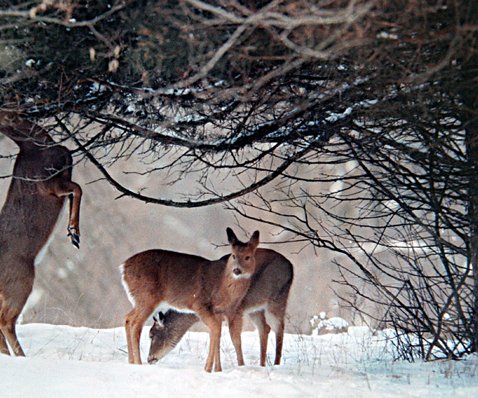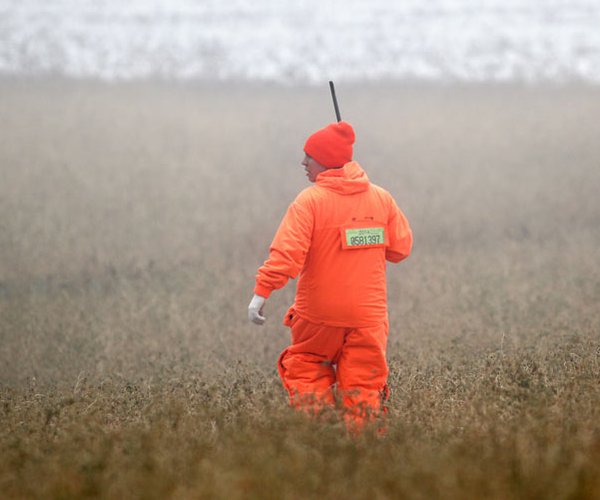

Wisconsin needs deer seasons as a primary tool to manage the population. Cash from hunters’ license sales fuels wildlife management, too. Businesses sell to hunters and others impacted by deer, deer damage, and producers who suffer from deer consuming crops.
Realize and accept it, or not, we all seem to touch deer in some way. Everyone benefits from media informing us anything deer.
Hunter numbers are not holding; hunters may have reached their saturation level in the number of deer they can or want to put in a freezer.
Hunters, non-hunters, businesses, and organizations, at least many of them, are best served if they understand deer, deer hunting, deer hunters, and others who enjoy deer for aesthetic reasons.
In other words deer, gun deer season, and deer management involve, impact, and influence anyone interested in deer and anyone whose livelihood touches deer.
Wisconsin could begin a better flow of understanding this ecological web by designating a Deer Day to help recognize the significance of Wisconsin’s state wildlife animal, the white-tailed deer. Let this not be just deer season, deer hunting day, but a day for all who enjoy the animal.
The media should be encouraged to publicize a Deer Day and hunting season with news coverage. Even now in some regions of the state it is as though there is no season, no deer.
This encouragement for deer coverage cannot come from the DNR beyond numerous news releases and media meetings to provide story ideas and copy.
Hunters, media, and the DNR need to “speak” to the reader and listener in a broader sense than 30 for 30s, food plots, and record racks.
Throw a tid bit to the public that the deer season, for example, involves most of us, hunters and coffee sales clerks. And, too, there is more out there than whitetails.
There are acorns, blue jays, landscape plants, traffic accidents and trespassers, as well as businesses selling binoculars and utility vehicles. Television and newspapers could easily feature nine stories during the nine-day season and never mention the hunter, never show a dead deer, or a back tag.
Stories could talk of getting venison to those who don’t hunt, families who gather for Thanksgiving hoping Johnnie and Jean kill a wild turkey to go with the venison loin Charlie gave them for permission to hunt his land, or that Dave and his crew left their deer stands early and brought two pickup loads of dry white oak firewood to fuel Peggy’s wood-burning furnace.
An interesting point is these first steps are nearly free to pull off.
While deer are certainly not evenly distributed, and while some parts in the north are underpopulated from a hunter’s yardstick, southern Wisconsin is generally the opposite.
Dealing with hunters maxed out on venison, and slipping hunter license sales quickly points to individuals who would take venison if only a hunter would kill a deer for them.
There may be thousands of folks hungry for venison, or interested in trying a venison burger. Many of them do not hunt and don’t know a hunter or a system to give them that bite of venison to eat.
Can the small venison donation system for the needy be enhanced with more hunters making connections with non-hunters who would like deer? Some of those connections have been made, but not enough.
Hunters are not fully aware of this bottleneck and certainly non-hunters are not either.
Now for a Deer Day. It should not just be Gov. Evers putting it on the calendar but as a “holiday” of sorts. Business could advertise sales on food items, outdoors recreation items, clothing items, deer-hunting items, and blaze orange could be worn beyond Lambeau Field, at CheeseFactory Stadium. Sales clerks, TV anchors, teachers, street workers, and politicians could be encouraged to participate in some way during Deer Day, maybe held the Thursday before the Saturday opener.
Blaze orange could become the next color fad as camouflage did.
It is an opportunity to educate and then interest more hunters and residents in deer management concerns and ways to connect them without much cost; businesses should gain.
Showing the public that the Department of Natural Recourses is also concerned with those who are more engaged in quiet gatherings such as picking, digging and collecting from the wild, those people are more likely to pick up and read or listen to news about deer hunting and how it might impact a driver who crashes with a buck.
A Deer Day could begin to change the emphasis a bit and treat the season as something that impacts nearly everyone, which it does.
Already this fall 35,056 deer have been registered. Of those, 16,606 by crossbowers and 10,755 by archers. Turkey hunters have registered 1,987 birds to date.
Pheasant season was off to a moderate start with warm weather, hunters’ concern for their dogs and selves, and generally uncomfortable conditions.
Autumn has moved full time into southern Wisconsin with hickories showing yellow and oaks a combination of rusts, reds and maroons, while walnuts and aspens are nearly leafless. White pines have shed their oldest needles. Evergreen shrubs may need a soaking to survive winter’s frozen soil. Green needles lose water during winter but often suffer from what’s called a winter desert.
Begin checking deer hunting gear and making contacts with local landowners now.
Bird feeding is beginning to intensify, too.
— Jerry Davis is an Argyle native and a freelance writer who lives in Barneveld. He can be reached at sivadjam@mhtc.net or at 608-924-1112.






